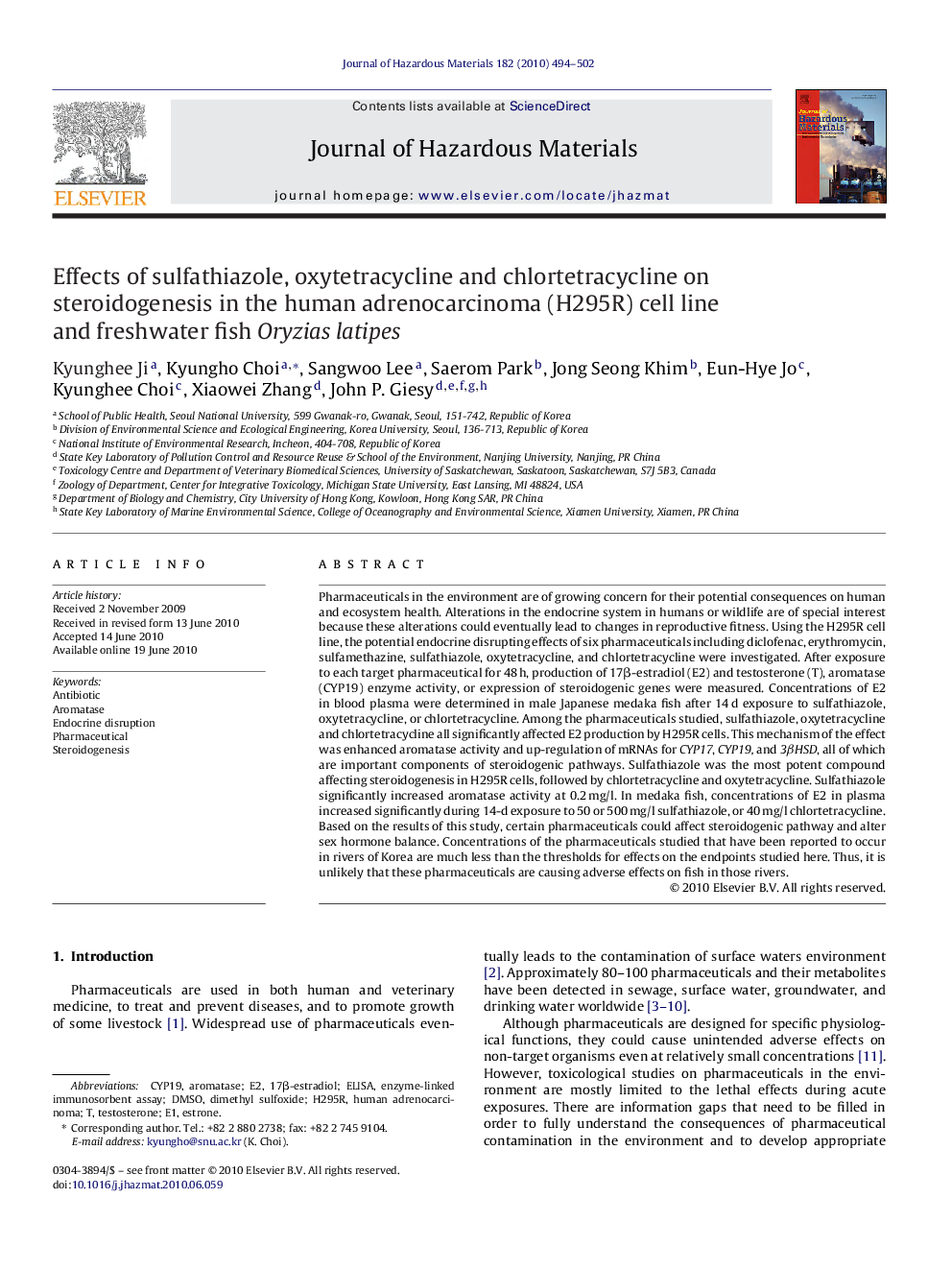| کد مقاله | کد نشریه | سال انتشار | مقاله انگلیسی | نسخه تمام متن |
|---|---|---|---|---|
| 579716 | 1453146 | 2010 | 9 صفحه PDF | دانلود رایگان |
عنوان انگلیسی مقاله ISI
Effects of sulfathiazole, oxytetracycline and chlortetracycline on steroidogenesis in the human adrenocarcinoma (H295R) cell line and freshwater fish Oryzias latipes
دانلود مقاله + سفارش ترجمه
دانلود مقاله ISI انگلیسی
رایگان برای ایرانیان
کلمات کلیدی
H295RCYP1917β-estradiol - 17β استرادیولDMSO - DMSOaromatase - آروماتازAntibiotic - آنتی بیوتیکهاEndocrine disruption - اختلالات غدد درون ریزSteroidogenesis - استروئیدوژنزEstrone - استرونELISA - تست الیزاEnzyme-linked immunosorbent assay - تست الیزاtestosterone - تستوسترونPharmaceutical - داروییDimethyl sulfoxide - دیمتیل سولفواکسید
موضوعات مرتبط
مهندسی و علوم پایه
مهندسی شیمی
بهداشت و امنیت شیمی
پیش نمایش صفحه اول مقاله

چکیده انگلیسی
Pharmaceuticals in the environment are of growing concern for their potential consequences on human and ecosystem health. Alterations in the endocrine system in humans or wildlife are of special interest because these alterations could eventually lead to changes in reproductive fitness. Using the H295R cell line, the potential endocrine disrupting effects of six pharmaceuticals including diclofenac, erythromycin, sulfamethazine, sulfathiazole, oxytetracycline, and chlortetracycline were investigated. After exposure to each target pharmaceutical for 48 h, production of 17β-estradiol (E2) and testosterone (T), aromatase (CYP19) enzyme activity, or expression of steroidogenic genes were measured. Concentrations of E2 in blood plasma were determined in male Japanese medaka fish after 14 d exposure to sulfathiazole, oxytetracycline, or chlortetracycline. Among the pharmaceuticals studied, sulfathiazole, oxytetracycline and chlortetracycline all significantly affected E2 production by H295R cells. This mechanism of the effect was enhanced aromatase activity and up-regulation of mRNAs for CYP17, CYP19, and 3βHSD, all of which are important components of steroidogenic pathways. Sulfathiazole was the most potent compound affecting steroidogenesis in H295R cells, followed by chlortetracycline and oxytetracycline. Sulfathiazole significantly increased aromatase activity at 0.2 mg/l. In medaka fish, concentrations of E2 in plasma increased significantly during 14-d exposure to 50 or 500 mg/l sulfathiazole, or 40 mg/l chlortetracycline. Based on the results of this study, certain pharmaceuticals could affect steroidogenic pathway and alter sex hormone balance. Concentrations of the pharmaceuticals studied that have been reported to occur in rivers of Korea are much less than the thresholds for effects on the endpoints studied here. Thus, it is unlikely that these pharmaceuticals are causing adverse effects on fish in those rivers.
ناشر
Database: Elsevier - ScienceDirect (ساینس دایرکت)
Journal: Journal of Hazardous Materials - Volume 182, Issues 1â3, 15 October 2010, Pages 494-502
Journal: Journal of Hazardous Materials - Volume 182, Issues 1â3, 15 October 2010, Pages 494-502
نویسندگان
Kyunghee Ji, Kyungho Choi, Sangwoo Lee, Saerom Park, Jong Seong Khim, Eun-Hye Jo, Kyunghee Choi, Xiaowei Zhang, John P. Giesy,